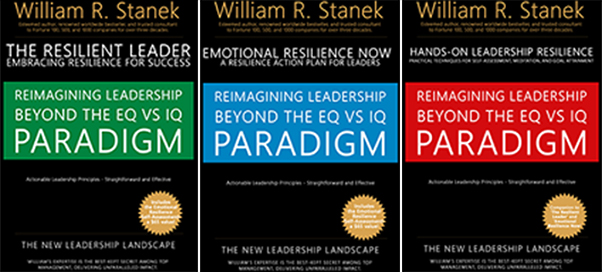

Living Well: Daily Habits and Practices
A fulfilling life is built on small, daily actions. In this series, William and Hui Cha Stanek share their insights on cultivating meaningful habits—from morning routines to simple practices that enhance well-being—helping you live with purpose and balance.

Transform your life with practical wisdom. Discover William Stanek's 'Living Well' series—your guide to a balanced and fulfilling life.
Discover William Stanek's Exclusive Art Collection
Explore and purchase the stunning art featured on this site. Own a piece of William Stanek's unique and captivating artwork today!
(May 17, 2025) Time Management Tips: How to Structure Your Day for Maximum Productivity
Time is our most valuable resource, yet it often feels like there’s never enough of it. For William and Hui Cha Stanek, mastering the art of time management has been key to achieving their goals and maintaining a balanced, fulfilling life. By structuring their days with intention and focus, they’ve been able to maximize productivity, reduce stress, and find time for what truly matters.
In this article, we’ll explore practical strategies for managing your time effectively, including tips on prioritization, scheduling, and avoiding procrastination. By implementing these time management techniques, you can take control of your day, boost your productivity, and create more space for the things that matter most.
The Importance of Time Management: Lessons from the Staneks
For William and Hui Cha, time management was not just about getting more done—it was about creating a life that aligned with their goals and values. They understood that how they spent their time each day directly impacted their success, well-being, and overall quality of life.
1. Achieving Goals Through Intentional Planning
One of the key lessons the Staneks learned was that effective time management is essential for achieving both short-term and long-term goals. By planning their days with intention and focus, they were able to make steady progress toward their ambitions, whether it was completing a project, pursuing a personal interest, or maintaining a healthy lifestyle.
2. Reducing Stress and Overwhelm
Time management also played a crucial role in reducing stress and avoiding overwhelm. William and Hui Cha found that when they structured their days effectively, they were able to stay on top of their responsibilities without feeling rushed or frazzled. This proactive approach helped them maintain a sense of calm and balance, even during busy times.
3. Creating Space for What Matters Most
Finally, effective time management allowed the Staneks to create space for the things that mattered most to them, such as spending time with family, engaging in creative pursuits, and taking care of their health. By managing their time wisely, they were able to lead a more fulfilling life, where their priorities were reflected in how they spent each day.
Practical Time Management Strategies for Maximum Productivity
If you’re looking to improve your time management skills and structure your day for maximum productivity, here are some practical strategies inspired by the Staneks’ approach.
1. Prioritize Your Tasks
The first step in effective time management is learning to prioritize your tasks. William and Hui Cha used a simple yet powerful technique to prioritize their tasks: the Eisenhower Matrix. This method involves categorizing tasks into four quadrants based on their urgency and importance:
- Urgent and Important: Tasks that require immediate attention (e.g., meeting deadlines, handling emergencies).
- Important but Not Urgent: Tasks that contribute to long-term goals (e.g., strategic planning, professional development).
- Urgent but Not Important: Tasks that are time-sensitive but don’t significantly impact your goals (e.g., routine emails, minor requests).
- Not Urgent and Not Important: Tasks that can be minimized or eliminated (e.g., distractions, low-priority activities).
By focusing on tasks that are both urgent and important, you ensure that you’re spending your time on activities that truly matter. The key is to avoid getting bogged down by tasks in the “not urgent and not important” quadrant, which can easily drain your time and energy.
2. Time Block Your Schedule
Time blocking is a powerful technique that the Staneks used to manage their time effectively. This method involves dividing your day into blocks of time dedicated to specific tasks or activities. By assigning time blocks to your most important tasks, you create a structured schedule that helps you stay focused and productive.
To start time blocking, take your prioritized tasks and assign each one a specific time slot in your day. For example, you might block out the first two hours of your day for focused work, followed by a time block for meetings, and another block for administrative tasks. The goal is to create a schedule that reflects your priorities and helps you stay on track.
3. Set Clear Goals and Break Them Down
Setting clear, achievable goals is essential for effective time management. The Staneks found that by breaking down their larger goals into smaller, manageable tasks, they could make steady progress without feeling overwhelmed. This approach not only kept them motivated but also ensured that they stayed on track toward their long-term objectives.
When setting your goals, make sure they are specific, measurable, and realistic. Break each goal down into smaller tasks that can be completed within a day or a week. This makes it easier to see your progress and stay focused on what needs to be done.
4. Avoid Multitasking
While it may seem like multitasking is an efficient way to get more done, it often leads to decreased productivity and increased errors. William and Hui Cha discovered that focusing on one task at a time allowed them to work more efficiently and produce higher-quality results.
To avoid multitasking, try to fully engage with the task at hand before moving on to the next one. Use time blocks to focus on one activity at a time, and resist the temptation to switch between tasks. By giving each task your full attention, you’ll complete it more quickly and effectively.
5. Take Regular Breaks
Productivity isn’t just about working hard—it’s also about working smart. The Staneks understood the importance of taking regular breaks to rest and recharge. They found that short breaks throughout the day helped them maintain their energy levels and stay focused.
Incorporate regular breaks into your schedule, whether it’s a five-minute walk, a quick stretch, or a moment of mindfulness. These breaks can help you clear your mind, reduce stress, and return to your work with renewed focus and creativity.
6. Use Tools and Technology Wisely
There are countless tools and apps available to help you manage your time more effectively. The Staneks used a combination of digital tools, such as calendars, task management apps, and reminders, to stay organized and on track.
Choose tools that suit your style and needs, and use them to help you plan, prioritize, and schedule your tasks. However, be mindful of not overloading yourself with too many tools—simplicity is key to staying organized without feeling overwhelmed.
7. Reflect and Adjust
Effective time management requires ongoing reflection and adjustment. William and Hui Cha regularly reviewed their schedules and routines to see what was working and what needed to be changed. By reflecting on their productivity and making adjustments as needed, they were able to continually improve their time management skills.
Take time at the end of each day or week to review your progress. Ask yourself what went well, what challenges you faced, and how you can adjust your schedule or approach to be more effective. This reflection helps you stay on a path of continuous improvement.
Overcoming Procrastination: Tips from the Staneks
Procrastination is one of the biggest obstacles to effective time management. William and Hui Cha encountered this challenge as well, but they developed strategies to overcome it and stay productive.
1. Identify the Root Cause
The first step in overcoming procrastination is to identify the root cause. Are you procrastinating because a task feels overwhelming, because you’re unsure where to start, or because you’re avoiding something unpleasant? Understanding why you’re procrastinating can help you address the underlying issue.
2. Break Tasks into Smaller Steps
One of the most effective ways to combat procrastination is to break tasks into smaller, more manageable steps. The Staneks found that when they broke down large tasks into smaller pieces, it was easier to get started and build momentum.
Start by focusing on the first small step, rather than the entire task. For example, if you’re procrastinating on writing a report, begin by outlining the main points. Once you’ve completed the first step, you’ll likely find it easier to continue.
3. Set a Timer
Setting a timer is another technique the Staneks used to overcome procrastination. By committing to work on a task for just 10 or 15 minutes, they were able to overcome the initial resistance and get started. Often, once they began working, they found it easier to continue beyond the initial time limit.
Try setting a timer for a short period of focused work. This technique, known as the Pomodoro Technique, involves working for 25 minutes, followed by a five-minute break. It’s an effective way to stay focused and make progress, even on tasks you’re tempted to put off.
4. Reward Yourself
The Staneks also used rewards as a way to motivate themselves to complete tasks they were tempted to procrastinate on. Whether it was a small treat, a break, or a favorite activity, having a reward to look forward to made it easier to stay on track.
Consider setting up a reward system for yourself. Promise yourself a small reward for completing a task, such as a coffee break, a walk outside, or some time spent on a hobby. This positive reinforcement can help you overcome procrastination and stay motivated.
Call to Action: Implement Time Management Strategies in Your Day
Inspired by the Staneks’ approach to time management, we challenge you to implement at least one of the strategies outlined in this article. Whether it’s time blocking your schedule, setting clear goals, or using the Eisenhower Matrix to prioritize your tasks, choose a technique that resonates with you and put it into practice.
As you incorporate these time management strategies into your routine, take note of how they impact your productivity, stress levels, and overall sense of control. Share your experiences with us using the hashtag #ManageTimeWithTheStaneks, and let’s support each other in making the most of our time.
Conclusion: Mastering Your Time for Maximum Productivity
For William and Hui Cha Stanek, mastering time management has been a key factor in their ability to achieve their goals and maintain a balanced life. By prioritizing tasks, structuring their day, and avoiding procrastination, they’ve been able to maximize their productivity and create space for what truly matters.
Effective time management isn’t about doing more—it’s about doing what matters most. By implementing the strategies outlined in this article, you can take control of your time, reduce stress, and make meaningful progress toward your goals.
So, take the first step today—start structuring your day for maximum productivity, and watch as your efficiency, focus, and sense of accomplishment grow. Because when you manage your time effectively, you empower yourself to achieve your full potential and live a more fulfilling, purpose-driven life.

Join William at the crossroads of technology, business, and leadership, where true influence isn't about titles - it's about inspiring action, driving change, and guiding others with integrity. Discover how authentic leadership can transform not just careers, but entire industries.
Bring Inspiration Home
Enhance your space with William Stanek's evocative art. Each piece is crafted to inspire and uplift your everyday life.

Support The Lights of Paris by Robert Stanek, William Stanek's pen name! Through vivid historical detail and deeply moving character stories, Robert takes readers on an unforgettable journey through one of history’s most transformative times.















